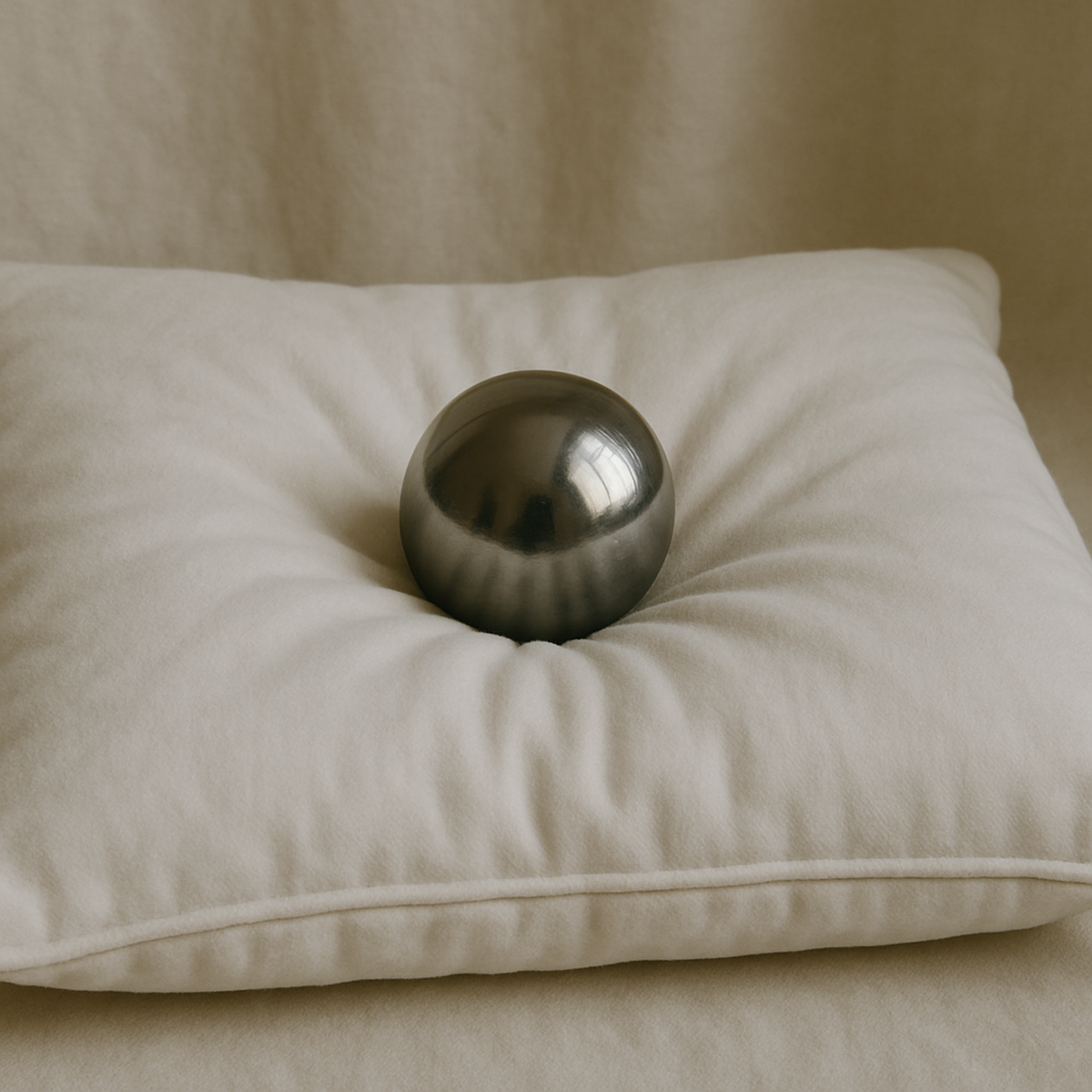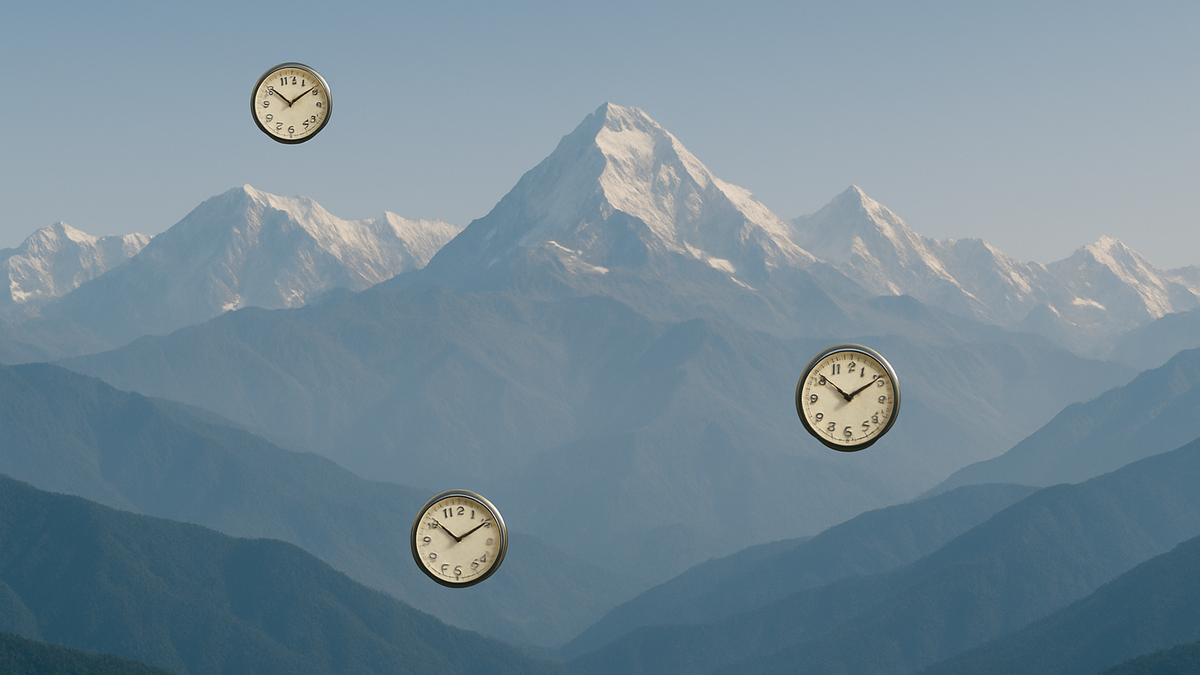One of the deepest puzzles in modern science is how quantum mechanics and general relativity — the two great pillars of 20th century physics — fit together. Quantum mechanics governs the microscopic world of atoms and subatomic particles. General relativity describes gravity and the structure of spacetime. Both theories are stunningly successful in their domains, but they don’t yet combine into a single unified framework. A central difficulty lies in testing where the two theories might meet. While quantum experiments often take place in controlled laboratories, the effects of spacetime curvature are usually faint and detectable only on astronomical scales.
A new study by Jacob Covey, Igor Pikovski, and Johannes Borregaard, all from universities in the US, has proposed a new way to probe this intersection. By using a distributed network of atomic clocks, they outline an experiment that could directly reveal how quantum systems behave in curved spacetime. Their approach uses advances in atomic physics, quantum networking, and precision timekeeping to make a once-outlandish idea a real experimental possibility.
“The interplay between quantum theory and gravity is one of the most challenging problems in physics today, but also fascinating,” Igor Pikovski, one of the co-authors and assistant professor in the School of Engineering and Science at the Stevens Institute of Technology in the US, said in a statement.
The study was published in PRX Quantum in July. A complementary theoretical work co-authored by Borregaard and Pikovski appeared in Physical Review Research in May.
Sensing the curve
For more than a century, physicists have dreamed of bridging quantum mechanics and gravity. Efforts generally fall into two categories. One is the search for a full theory of quantum gravity, where gravity itself is quantised like the other forces of nature. For example, the electromagnetic force is quantised as photons, the particles of light. The goal in this category is to develop a theory that can explain the universe’s gravitational features using hypothetical particles called gravitons.
The other category has a more modest goal: exploring how ordinary quantum systems behave in a spacetime already curved by gravity. This approach does not require speculative new theories but still asks foundational questions. For example, do basic quantum principles like unitarity, linearity, and the Born rule still hold?
Thus far, most laboratory experiments have only tested quantum mechanics with the assumption that gravity is a simple force that pulls objects towards a heavier mass. For example, neutron bouncing experiments and atom interferometers have shown phase shifts induced by the earth’s gravitational potential, but they haven’t probed deeper effects due to relativity.
One such effect is the curvature of spacetime. That is, according to the general theory of relativity, a massive object will curve spacetime around itself. When a lighter body passes through this region of spacetime, it will naturally be deflected along the curved path. The apparent force responsible for the deflection is said to be gravity. This is why, for example, the moon is said to be in orbit around the earth: it’s simply moving along the spacetime curved by the earth’s mass.

In this visual metaphor, the pillow is like spacetime and the heavy ball could be the earth or the sun. The mass bends spacetime around itself. When another body traverses this area, it follows a curved path.
| Photo Credit:
Image created with ChatGPT 5
A tell-tale feature of curvature is that time doesn’t just flow differently at two points: it changes nonlinearly across space. For example, the difference between the time measured by two clocks 1 km and 2 km away from the earth’s surface is not exactly the same as the difference between the time measured by two clocks 3 km and 4 km away. This disparity is a direct sign that the spacetime that the clocks inhabit is curved.
Measuring this in an experiment will require the setup to compare data from at least three locations simultaneously.
The overarching goal is to (i) set up a purely quantum system, then (ii) look for the effects of curved spacetime in the properties of the system. If scientists spot any effects, they will demonstrate an intersection of (post-Newtonian) gravity and quantum physics.
In the new study, the authors have proposed building a network of three entangled atomic clocks, separated by kilometer-scale elevation differences, that act together as one “distributed clock”. By doing so, they say they can directly test how curved spacetime influences quantum interference patterns in the clock.
If this experimental setup is successful, it could be the first laboratory probe of spacetime curvature using quantum systems — a major leap forward.
The researchers designed a protocol based on cutting-edge quantum networking and atomic clock technologies. At its heart is a state of entanglement called the W state.

A resilient friendship
In quantum physics, particles like electrons or photons can be linked in such a way that what happens to one instantly affects the others. This strange connection is called entanglement. It’s one of the most important resources for quantum technologies like quantum computers and quantum communication.
The W state is a particular example of entanglement involving three or more particles. Imagine you have three quantum bits (qubits). The W state looks something like the following: One qubit is in the state 1 (excited) and the others are in 0 (not excited). But you don’t know which one is the 1. Instead, all three possibilities — first is 1 or second is 1 or third is 1 — are combined together in a balanced quantum superposition. In other words, exactly one of the three qubits is 1 but in a perfectly shared way across all three.
The W state has a very robust kind of entanglement. Even if you lose one of the particles, the others are still entangled with each other. This is different from another famous entangled state, the GHZ state, which completely loses its entanglement if you remove a particle.
Think of three friends sharing a secret. In a GHZ state, if one friend leaves, the secret is lost. In a W state, even if one friend leaves, the two remaining friends still share part of the secret. That’s why physicists like the W state: it’s more resilient.
The quantum symphony
The new protocol proposes to use ytterbium atoms as the qubits. Some property of the atoms changes back and forth in periodic fashion, like a clock ticking. Each atom will experience time differently because of its position in the earth’s gravity. After evolving for some time, the three states are recombined and measured. If the atoms’ W state has been affected by curved spacetime, scientists should expect to measure ‘shifts’ in the property’s value corresponding to the time-dilation between the three pairs of atoms. That is, these shifts will carry the imprint of the curvature itself.
According to the researchers’ analysis, this proposed setup could in principle resolve small shifts in the atoms’ frequency. For example, when the atoms are separated by 1 km through earth’s gravitational field and individual ytterbium atoms are able to hold their quantum state for around 50 seconds (called the coherence time), the frequency shifts could be of the order of 0.02 Hz. This shift would be easy to measure. And while the coherence time is very high, it’s within reach of modern technologies — if only just.
“Implementing the scheme proposed by Covey and his colleagues is currently at the limit of what is experimentally possible,” Djordje Minic, a professor of physics at Virginia Tech in the US and who wasn’t affiliated with the study, wrote in a commentary in APS Physics. “The main difficulty is the inevitable fragility of the required collective, entangled state.”
That said, the implications of such an experiment are far-reaching. First, it would mark a major step in experimentally probing the interface between quantum theory and general relativity, a frontier that has so far been largely theoretical. Direct evidence that quantum coherence and interference persist in curved spacetime would strengthen confidence in the universality of quantum mechanics.
Second, the experiment can be modified to test unitarity, linearity, and the Born rule under the influence of curved spacetime, which would address some of the most fundamental open questions in physics. If quantum mechanics were a symphony, linearity means all possible notes can be played at once, unitarity ensures the music never loses its rhythm or energy, and the Born rule means that when you finally listen, you hear one clear melody rather than a cacophony.
If scientists observe any deviations, it could be a sign of new physics beyond standard quantum theory. Even a null result — that everything behaves as expected — would provide valuable confirmation that no hidden breakdowns occur at this scale.
These three facets “are central to the structure, evolution, and measurement of quantum states,” Minic wrote. “The main novelty of the team’s approach is that it combines several advances made in the past decade on neutral atoms and trapped ions to achieve a new, unique quantum probe of curved spacetime.”

Room to be clever
“We assume that quantum theory holds everywhere — but we really don’t know if this is true,” Pikovski said. “It might be that gravity changes how quantum mechanics works. In fact, some theories suggest such modifications, and quantum technology will be able to test that.”
Third, the methodology opens doors for further exploration. By refining entangled atomic networks, scientists could probe more extreme gravitational environments, perhaps even onboard satellites, where larger separations and nearly-zero-noise environs are possible. Such systems could one day serve as sensitive detectors for exotic entities like dark matter and gravitational waves.
For students and young researchers, the new study also illustrates that some of the most fundamental questions about the universe can be addressed not by building ever-larger machines but also by cleverly combining precision tools scientists already have. The dream of uniting quantum mechanics and relativity may still be distant but experiments like this one could bring it tangibly closer.
